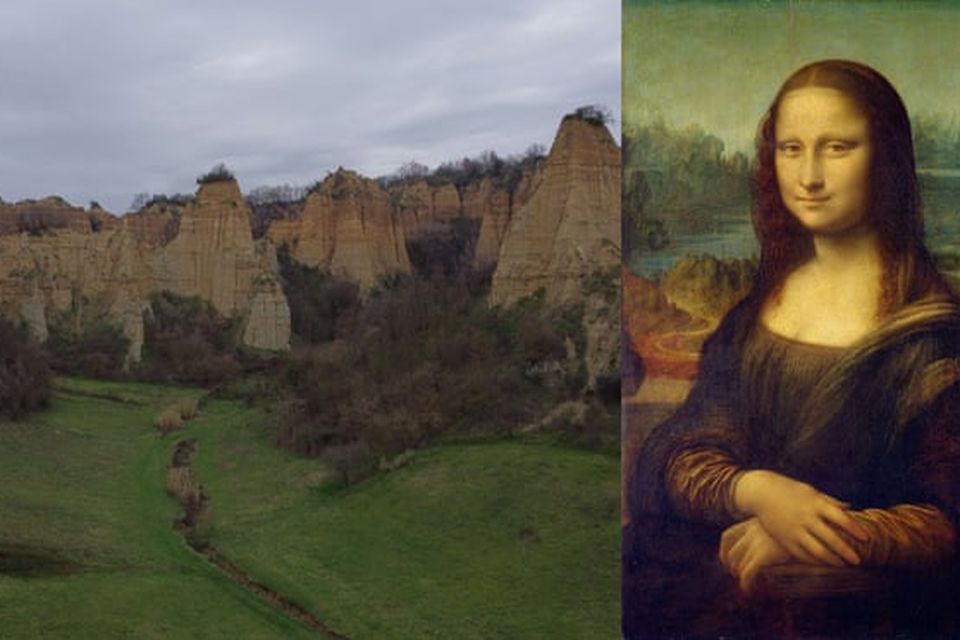Art historian claims to have solved mystery of bridge depicted in the Mona Lisa

The Tuscan landscape claimed to be the area depicted in the painting (right).
Nick Squires
The mystery behind a stone bridge depicted in the Mona Lisa has finally been solved, with an art historian identifying it as a crumbling ruin on the banks of a Tuscany river.
Drones and detective work were used to match the bridge featured in the background of Leonardo da Vinci’s painting to a real one spanning the Arno River near the village of Laterina.
All that remains of the Romito bridge today is a single arch, after it was badly damaged, probably by flooding, in the 18th century.
A digital reconstruction has shown it would have had four arches, just like the one in the portrait.
On the opposite side of the riverbank, the foundations of what would have been the fourth arch can still be seen in the undergrowth.
The findings could transform the fortunes of tiny Laterina, where the bridge crosses the River Arno.
Simona Neri, the local mayor, hopes the discovery – if confirmed – could encourage tourism.
The claim about the bridge was made by Silvano Vinceti, a historian who has written several books about Da Vinci. He found a document belonging to the Medici family in the state archives of Florence, which attests to the fact that the bridge at Laterina was intact and in frequent use when the painter was alive.
“We know he travelled through this part of Tuscany in the early 1500s – there is no doubt about that,” Mr Vinceti told a press conference in Rome.
The bridge was positioned on a road that connected Florence to the north with the busy market town of Arezzo in the south.
In the past, it was suggested that Da Vinci modelled the bridge in the Mona Lisa on either a bridge near the village of Bobbio or another in Buriano, both in Tuscany.
But Mr Vinceti pointed out that as those bridges had more than four arches, they did not match the one in the painting. They also spanned flat ground, whereas the Romito was built between two cliffs, corresponding closely to the bridge painted in the Mona Lisa.
The curve of the river in the painting also matched the curve of the Arno at the point where it was spanned by the bridge at Laterina.
“We have all the elements that point to this being the bridge portrayed in the Mona Lisa,” said Mr Vinceti.
He also dismissed suggestions that the bridge in the oil painting could have been a fictitious one, saying: “He was well known for drawing very realistically. The bridge is real. It was not conjured from his imagination.”
No comments:
Post a Comment